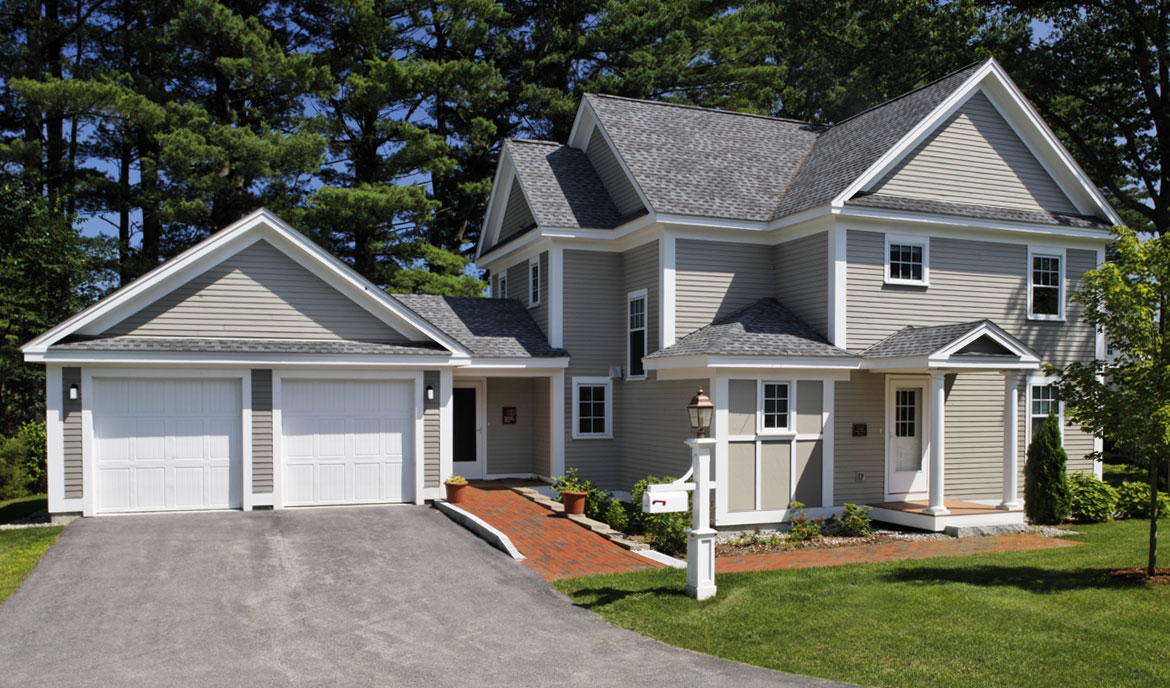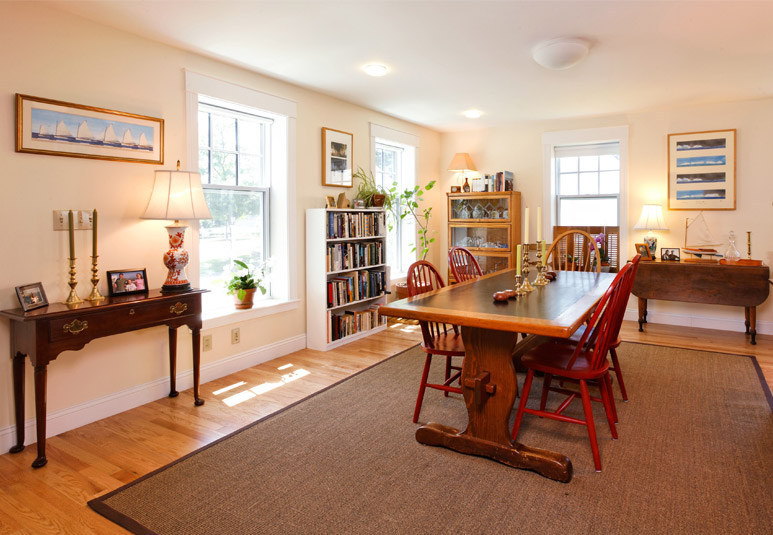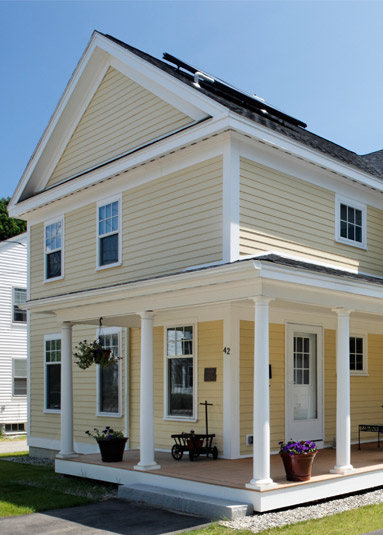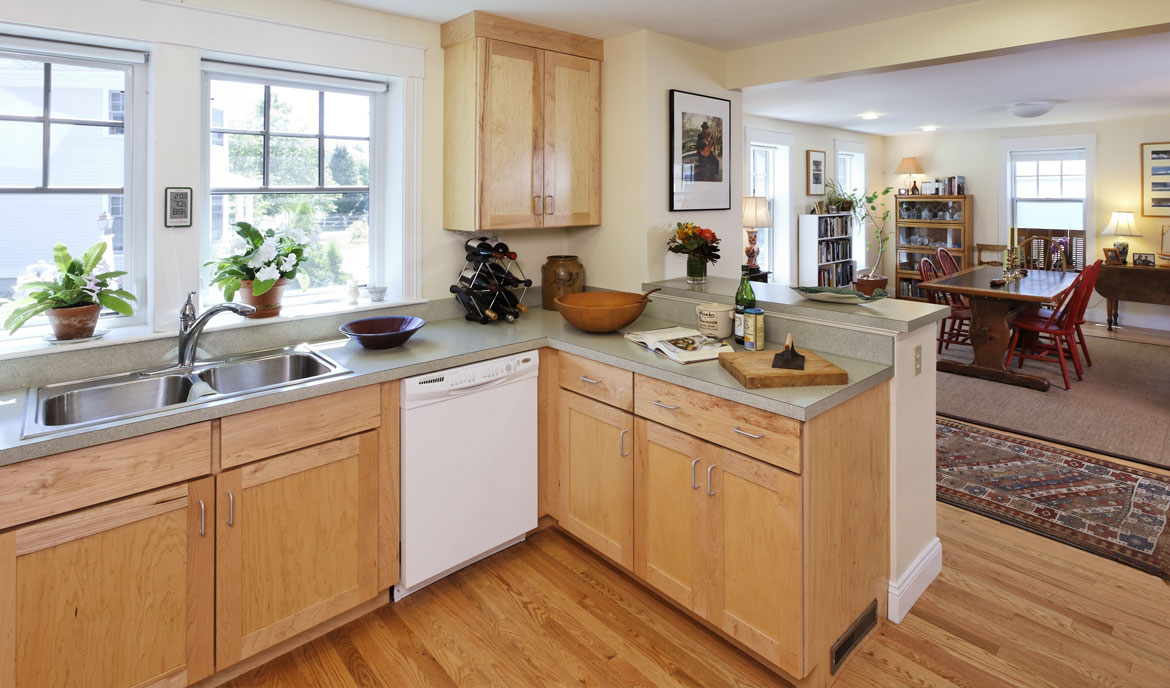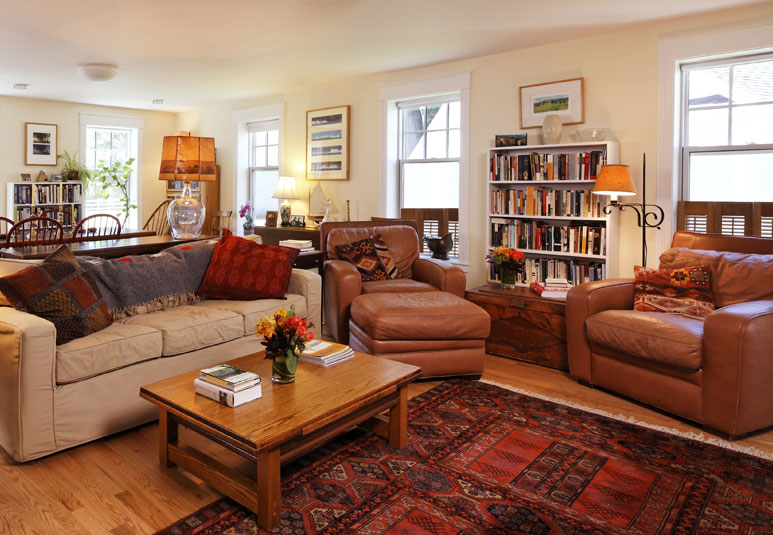PEA Faculty Housing
Exeter, NH
The firm originally designed four faculty homes for PEA in 2004 and the neighborhood was further expanded in 2008 with three additional units that comply with Phillips Exeter’s Environmental Mission…
Read More
Read Less
The firm originally designed four faculty homes for PEA in 2004 and the neighborhood was further expanded in 2008 with three additional units that comply with Phillips Exeter’s Environmental Mission Statement which mandates that “PEA must be committed to stewardship of the environment’ and value, protect, preserve and replenish natural resources.”
LEED (Leadership in Energy and Environmental Design) is the U.S. Green Building Council’s rating system to determine if a building meets specific green building criteria. The six major environmental categories that must be satisfied include: Sustainable Sites, Water Efficiency, Energy and Atmosphere, Materials and Resources, Indoor Environmental Quality and Innovation and Design. Silver, Gold and Platinum levels of LEED certification are awarded based upon points earned within each of these categories. The LEED process requires a project to go through third party verification to ensure that the goals set out by the design team are met in the field. LEED certification services for Phillips Exeter Academy were provided by the Jordan Institute, a non-profit organization working to implement significant climate change solutions in New Hampshire by reducing energy use in buildings.
The Gold certification for the three residences was achieved by reducing utility energy consumption by 50% and eliminating the use of fossil fuels for heating by using geo-thermal energy through wells drilled up to 220 feet below the surface. They also incorporated local building materials and native plants in the landscaping, recycled the majority of the construction waste and installed a rain garden to capture runoff from hard surfaces such as roofs or driveways.
The specific building materials used in the homes contribute to the overall sustainability of the project. The R-value of the walls of the homes was greatly increased by using structural insulated panels (SIPs) that have an insulating layer of foam sandwiched between structural boards. Triple-paned windows, fluorescent lighting, a drain water recovery system from showers, heat recovery ventilators to capture and return warm air, and Energy Star appliances have been installed in all three residences. There is easy access to recycling and low to no VOC materials have been employed to prevent “offgassing”.
- Location: Exeter, NH
- Three new homes for Phillips Exeter Academy faculty
- LEED Gold Certification
- Met all of the USGBC’s rating system criteria: Sustainable Sites, Water Efficiency, Energy and Atmosphere, Materials and Resources, Indoor Environmental Quality and Innovation and Design
- Click Here to learn about our top 10 tips for a sustainable home
Download Project Page
The firm originally designed four faculty homes for PEA in 2004 and the neighborhood was further expanded in 2008 with three additional units that comply with Phillips Exeter’s Environmental Mission Statement which mandates that “PEA must be committed to stewardship of the environment’ and value, protect, preserve and replenish natural resources.”
LEED (Leadership in Energy and Environmental Design) is the U.S. Green Building Council’s rating system to determine if a building meets specific green building criteria. The six major environmental categories that must be satisfied include: Sustainable Sites, Water Efficiency, Energy and Atmosphere, Materials and Resources, Indoor Environmental Quality and Innovation and Design. Silver, Gold and Platinum levels of LEED certification are awarded based upon points earned within each of these categories. The LEED process requires a project to go through third party verification to ensure that the goals set out by the design team are met in the field. LEED certification services for Phillips Exeter Academy were provided by the Jordan Institute, a non-profit organization working to implement significant climate change solutions in New Hampshire by reducing energy use in buildings.
The Gold certification for the three residences was achieved by reducing utility energy consumption by 50% and eliminating the use of fossil fuels for heating by using geo-thermal energy through wells drilled up to 220 feet below the surface. They also incorporated local building materials and native plants in the landscaping, recycled the majority of the construction waste and installed a rain garden to capture runoff from hard surfaces such as roofs or driveways.
The specific building materials used in the homes contribute to the overall sustainability of the project. The R-value of the walls of the homes was greatly increased by using structural insulated panels (SIPs) that have an insulating layer of foam sandwiched between structural boards. Triple-paned windows, fluorescent lighting, a drain water recovery system from showers, heat recovery ventilators to capture and return warm air, and Energy Star appliances have been installed in all three residences. There is easy access to recycling and low to no VOC materials have been employed to prevent “offgassing”.

